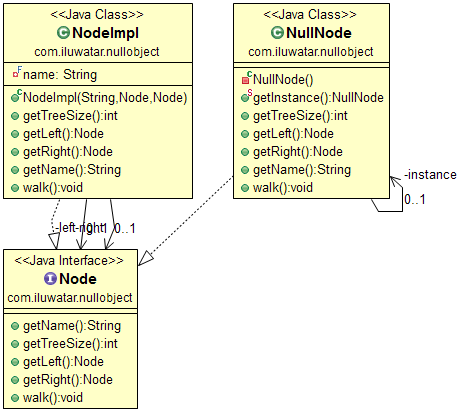* Adding support for maven assembly plugin to generate executable jar with all dependencies in built * Merge branch 'master' into issue-989 # Conflicts: # abstract-document/pom.xml # pom.xml * Adding maven assemly plugin for projects with name A * Update in format as per checkstyle, i.e. Spcae in place of tab with size of 2 * batch set - 2 having all project with B and C * issue-989 d-e-f * fixing eip pom and adding g-h-i-l-m-n Skipping naked object as it seems it doesn't have main method, will consider this at end * Adding for O and P projects Skipping Object-Mother as we don't have main method for same.
layout, title, folder, permalink, categories, tags
| layout | title | folder | permalink | categories | tags | |
|---|---|---|---|---|---|---|
| pattern | Null Object | null-object | /patterns/null-object/ | Behavioral |
|
Intent
In most object-oriented languages, such as Java or C#, references may be null. These references need to be checked to ensure they are not null before invoking any methods, because methods typically cannot be invoked on null references. Instead of using a null reference to convey absence of an object (for instance, a non-existent customer), one uses an object which implements the expected interface, but whose method body is empty. The advantage of this approach over a working default implementation is that a Null Object is very predictable and has no side effects: it does nothing.
Class diagram
Applicability
Use the Null Object pattern when
- You want to avoid explicit null checks and keep the algorithm elegant and easy to read.
